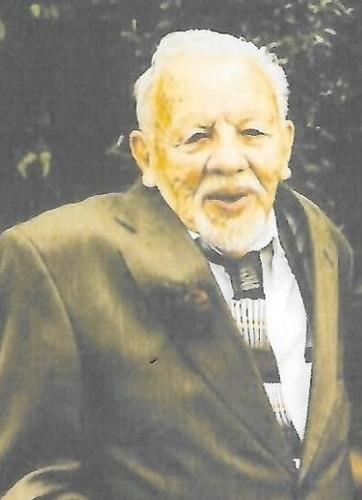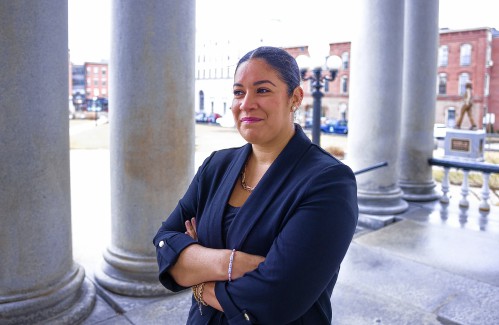
NH judge decides to pause Trump’s birthright citizenship order
A federal judge in Concord blocked President Donald Trump's executive order that sought to end birthright citizenship across the country.

Vehicle and bike collide in south Concord
A car and electric bike collided at the intersection of West Street and South State Street in Concord Thursday morning.
Most Read
 New Hampshire legalizes public alcohol consumption in designated ‘social districts’
New Hampshire legalizes public alcohol consumption in designated ‘social districts’
 New Hampshire providers brace for Medicaid changes that reach beyond healthcare
New Hampshire providers brace for Medicaid changes that reach beyond healthcare
 Warner town administrator granted restraining order against selectman
Warner town administrator granted restraining order against selectman
 Hotel makeover underway in downtown Concord
Hotel makeover underway in downtown Concord
 Opinion: Dear Gov. Ayotte, let’s talk about the books
Opinion: Dear Gov. Ayotte, let’s talk about the books
 State rules Epsom must pay open-enrollment tuition to other school districts, despite its refraining from the program
State rules Epsom must pay open-enrollment tuition to other school districts, despite its refraining from the program
Editors Picks
 A Webster property was sold for unpaid taxes in 2021. Now, the former owner wants his money back
A Webster property was sold for unpaid taxes in 2021. Now, the former owner wants his money back
 Report to Readers: Your support helps us produce impactful reporting
Report to Readers: Your support helps us produce impactful reporting
 City prepares to clear, clean longstanding encampments in Healy Park
City prepares to clear, clean longstanding encampments in Healy Park
 Productive or poisonous? Yearslong clubhouse fight ends with council approval
Productive or poisonous? Yearslong clubhouse fight ends with council approval
Sports

Athlete of the Week: Grace Saysaw, Concord High School
Concord High junior Grace Saysaw cemented herself as one of the Crimson Tide’s best sprinters of the past few years with a record-breaking end to the spring.
 Local golfers tee off at 122nd Amateur Championship
Local golfers tee off at 122nd Amateur Championship
Opinion

Opinion: Trumpism in a dying democracy
 Opinion: What Coolidge’s century-old decision can teach us today
Opinion: What Coolidge’s century-old decision can teach us today
 Opinion: The art of diplomacy
Opinion: The art of diplomacy
 Opinion: After Roe: Three years of resistance, care and community
Opinion: After Roe: Three years of resistance, care and community
 Opinion: Iran and Gaza: A U.S. foreign policy of barbarism
Opinion: Iran and Gaza: A U.S. foreign policy of barbarism

Your Daily Puzzles

An approachable redesign to a classic. Explore our "hints."

A quick daily flip. Finally, someone cracked the code on digital jigsaw puzzles.

Chess but with chaos: Every day is a unique, wacky board.

Word search but as a strategy game. Clearing the board feels really good.

Align the letters in just the right way to spell a word. And then more words.
Politics

New Hampshire school phone ban could be among strictest in the country
When Gov. Kelly Ayotte called on the state legislature to pass a school phone ban in January, the pivotal question wasn’t whether the widely popular policy would pass but how far it would go.
 Sununu decides he won’t run for Senate despite praise from Trump
Sununu decides he won’t run for Senate despite praise from Trump
Arts & Life

Arts in the Park returns for July
Concord Arts Market will host their second monthly Arts in the Park event on Saturday from 10 a.m. to 3 p.m. in Rollins Park.
 Hopkinton art gallery showcases “Creativity Beyond Convention”
Hopkinton art gallery showcases “Creativity Beyond Convention”
 AROUND CONCORD: Your guide to free summer music
AROUND CONCORD: Your guide to free summer music
 Around Concord: Steps to nowhere – but it used to be somewhere
Around Concord: Steps to nowhere – but it used to be somewhere
 Around Concord: Refreshing recipes from Table Bakery
Around Concord: Refreshing recipes from Table Bakery
Obituaries
 Mary Ann Hermman
Mary Ann Hermman
Baltimore, MD - Mary Ann Hermann died in her home in Baltimore on July 5, 2025, following a battle with cancer. She was 91. Mary Ann was a retired psychiatric nurse who worked in hospitals and visiting patients at their homes in Cuba, ... remainder of obit for Mary Ann Hermman
 David Franklin Whitney
David Franklin Whitney
Hillsboro, NH - David F. Whitney 87, a lifelong resident of Hillsboro, NH., joined his bride Patricia A. (Wing) Whitney in Heaven Thursday June 26,2025. Born September 10, 1937 to Harry L. and Harriett S. Whitney at their home on Wh... remainder of obit for David Franklin Whitney
 John Allen Fletcher
John Allen Fletcher
Epsom, NH - We are beyond sad to share that our father, John Allen Fletcher is no longer here to share in our daily lives. Born April 28, 1935, he was blessed to have celebrated his 90th birthday in Florida with 4 of his 7 great-grandch... remainder of obit for John Allen Fletcher
 Joan Reed
Joan Reed
Joan "Jody" Reed Concord, NH - Joan "Jody" Reed, age 90, of East Side Drive passed away peacefully on Tuesday, July 8th, 2025 at Havenwood. She was born in Newport, NH, the daughter of the late Dr. Raymond Libby and Selma (Swedberg) Lib... remainder of obit for Joan Reed


 Veterans not for profit Swim With A Mission holds annual Paintball, Swimming and Navy SEAL Gold Star Family Tribute Dinner
Veterans not for profit Swim With A Mission holds annual Paintball, Swimming and Navy SEAL Gold Star Family Tribute Dinner
 Concord Little League softball team to play in state championship at Martin Field in Concord against Mount Monadnock
Concord Little League softball team to play in state championship at Martin Field in Concord against Mount Monadnock
 Town turmoil: Chichester town administrator resigns again
Town turmoil: Chichester town administrator resigns again
 Police investigate shooting at Sanbornton home that left one person injured
Police investigate shooting at Sanbornton home that left one person injured
 Lavender haze: Purple fields bloom at Warner farm
Lavender haze: Purple fields bloom at Warner farm
 Get $30 toward a new air conditioner at Concord turn-in event
Get $30 toward a new air conditioner at Concord turn-in event

 As Concord’s Gavin Richardson places second at golf Junior Amateur, young players look ahead to the 122nd State Amateur Championship
As Concord’s Gavin Richardson places second at golf Junior Amateur, young players look ahead to the 122nd State Amateur Championship Sunapee’s Bryce Whitlow keeps memory of above-average MLB players alive through social media page ‘MLB Hall of (Pretty) Good’
Sunapee’s Bryce Whitlow keeps memory of above-average MLB players alive through social media page ‘MLB Hall of (Pretty) Good’ Six local seniors play in CHaD East-West All-Star Football game; Nyhan wins MVP
Six local seniors play in CHaD East-West All-Star Football game; Nyhan wins MVP Concord became a Housing Champion. Now, state lawmakers could eliminate the funding.
Concord became a Housing Champion. Now, state lawmakers could eliminate the funding. ‘A wild accusation’: House votes to nix Child Advocate after Rep. suggests legislative interference
‘A wild accusation’: House votes to nix Child Advocate after Rep. suggests legislative interference  Town elections offer preview of citizenship voting rules being considered nationwide
Town elections offer preview of citizenship voting rules being considered nationwide
